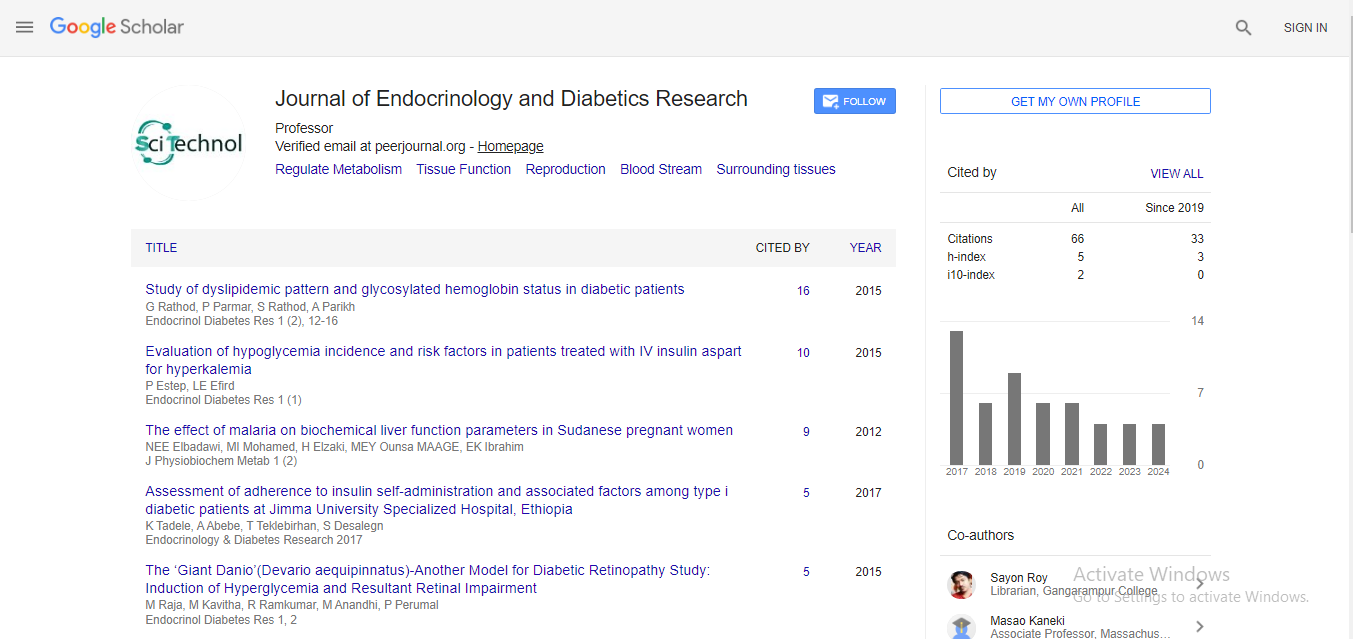A retrospective study of the microbiology of diabetic foot infections at a community hospital in Bermuda
Donna Kaye Bennett, Tamar Nasqidashvili, Joseph Saunders, Lavern Swaby and Clyde Wilson
Department of Medicine, King Edward VII Memorial Hospital, Bermuda Departments of Pathology and Microbiology, King Edward VII Memorial Hospital, Bermuda
: Endocrinol Diabetes Res
Abstract
There is a high prevalence of type 2 diabetes mellitus in Bermuda. It has been well established that a significant number of patients with diabetes mellitus will develop a diabetic foot infection (DFI), which is associated with increased morbidity and mortality. The objectives of this study were to determine the microbiological and antimicrobial susceptibility profile in DFIs and to investigate whether methicillin resistant Staphylococcus aureus (MRSA) is a common pathogen as well as if it plays a pivotal role in amputations. A retrospective study was carried out on 96 patients diagnosed with DFI. Demographic data, types of cultures, antimicrobial susceptibility profile and antimicrobial management were collected from medical records. Of the ninety-six patients investigated, Staphylococcus aureus was the most common organism isolated, followed by Pseudomonas aeruginosa, Group B Streptococcus and Proteus mirabilis. In addition, MRSA was also isolated at a low frequency. The organisms isolated showed susceptibility to commonly used antimicrobial agents such as amoxicillin/clavulanate, clindamycin, cefazolin, ampicillin/sulbactam, tetracycline, ceftriaxone, trimethoprimsulfamethoxazole and piperacillintazobactam. There was an association between peripheral vascular disease (PVD) and diabetes related amputations. In conclusion, Staphylococcus aureus is a common organism in DFI and the findings of the study does not support empirical MRSA antimicrobial therapy for the management of DFI. There was no evidence to suggest that there is an association between MRSA and diabetes related amputations. Keywords: Diabetes Foot Infection, Amputation, Staphylococcus aureus, Methicillin Resistant Staphylococcus aureus.References 1. Parris D, The alarming increase of diabetes in Bermuda. West Indian Med J 2014; 63: 685. 2. Dialysis in Bermuda, Bermuda Health Council. 2018. http://bhec.bm/wp-content/uploads/2018/041/ issue-briefdialysis-v1-20180416. 3. Kwon KT, Armstrong DG. Microbiology and antimicrobial therapy for diabetic foot infections. Infect Chemother. 2018; 50: 11. 4. Lavery LA, Fontaine JL, Bhavan K, Kim PJ, Williams JR, Hunt NA. Risk factors for methicillin resistant Staphylococcus aureus in diabetic foot infections. Diabet Foot Ankle 2014; 5: 23575. 5. Stacey HJ, Clements CS, Welburn SC, Jones JD. The prevalence of methicillin resistant Staphylococcus aureus among diabetic patients: a meta-analysis. Acta Diabetol. 2019; 56: 907-21.
Biography
Donna Kaye Bennett BSc.; MBBS; DM, is a graduate of The University of the West Indies’ (Mona) Jamaica Internal Medicine programme. She has worked as a Locum internist at The Cheshire Hall Medical Centre in Providenciales, Turks and Caicos Islands and as Head, Department of Medicine at the Savanna-la-mar Public General Hospital in Westmoreland, Jamaica West Indies. She is currently employed at The King Edward VII Memorial Hospital, Bermuda for the past seven years, where she works as a Hospitalist. Her graduate research project, The Prevalence of Mycoplasma pneumoniae in an Urban Hospital (2012) was published by University of the West Indies.
 Spanish
Spanish  Chinese
Chinese  Russian
Russian  German
German  French
French  Japanese
Japanese  Portuguese
Portuguese  Hindi
Hindi 


